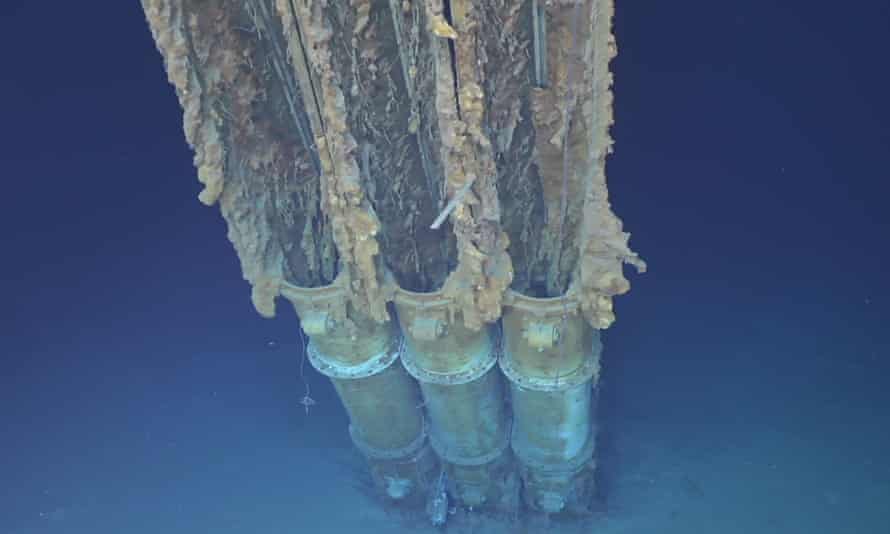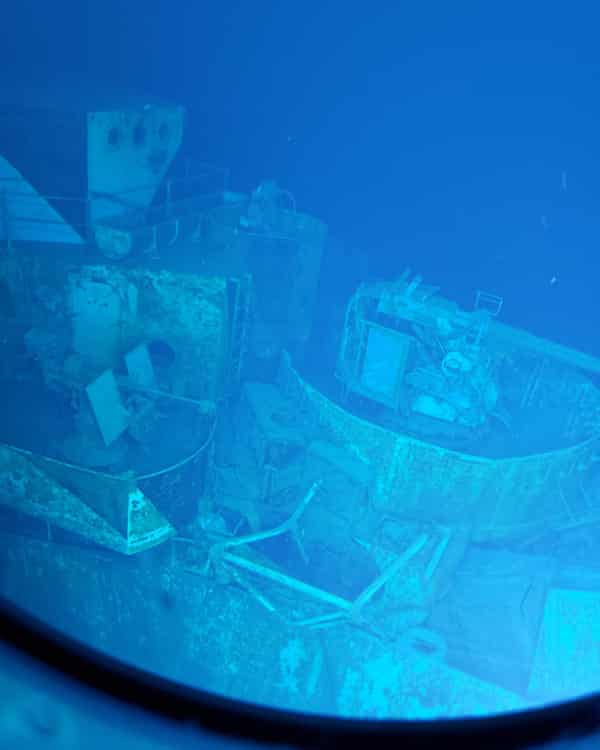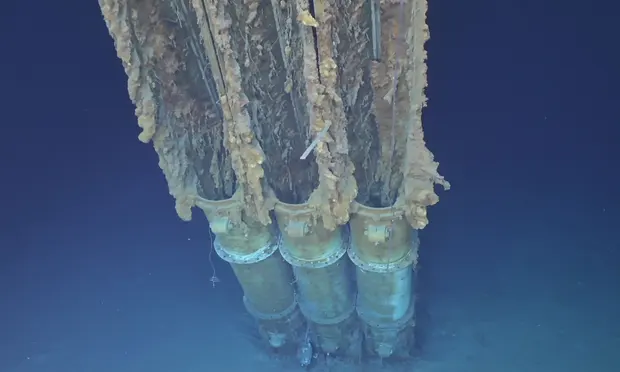Shipwreck of US destroyer ‘Sammy B’ becomes deepest ever discovered
Second world war ship found broken in two at depth of 22,916 feet in Philippines at ‘hallowed war grave’
A US navy destroyer that engaged a superior Japanese fleet in the largest sea battle of the second world war in the Philippines has become the deepest shipwreck to be discovered, according to explorers.
The USS Samuel B Roberts, popularly known as the “Sammy B”, was identified on Wednesday broken into two pieces on a slope at a depth of 22,916 feet (6,985m), or about four miles.
That puts it 1,400 feet deeper than the USS Johnston, the previous deepest wreck discovered last year in the Philippine Sea, also by American explorer Victor Vescovo, founder of Dallas-based Caladan Oceanic Expeditions. He announced the latest find together with UK-based Eyos Expeditions.

“It was an extraordinary honour to locate this incredibly famous ship, and by doing so have the chance to retell her story of heroism and duty to those who may not know of the ship and her crew’s sacrifice,“ Vescovo, a former Navy commander, said in a statement.
The Sammy B took part in the Battle off Samar, the final phase of the Battle of Leyte Gulf in October 1944, in which the Japanese imperial navy suffered its biggest loss of ships and failed to dislodge the US forces from Leyte, which they invaded earlier as part of the liberation of the Philippines.

According to some records, the destroyer disabled a Japanese heavy cruiser with a torpedo and significantly damaged another. After having spent virtually all its ammunition, she was critically hit by the lead battleship Yamato and sank. Of a 224-man crew, 89 died and 120 were saved, including the captain, Lt Cmdr Robert W Copeland.
According to Samuel J Cox, a retired admiral and naval historian, Copeland stated there was “no higher honour” then to have led the men who displayed such incredible courage going into battle against overwhelming odds, from which survival could not be expected.
“This site is a hallowed war grave, and serves to remind all Americans of the great cost born by previous generations for the freedom we take for granted today,” Cox said in a statement.
The explorers said that up until the discovery, the historical records of where the wreck lay were not very accurate. The search involved the use of the deepest side-scan sonar ever installed and operated on a submersible, well beyond the standard commercial limitations of 19,685 feet, Eyos said.
… we have a small favour to ask. Millions are turning to the Guardian for open, independent, quality news every day, and readers in 180 countries around the world now support us financially.
We believe everyone deserves access to information that’s grounded in science and truth, and analysis rooted in authority and integrity. That’s why we made a different choice: to keep our reporting open for all readers, regardless of where they live or what they can afford to pay. This means more people can be better informed, united, and inspired to take meaningful action.
In these perilous times, a truth-seeking global news organisation like the Guardian is essential. We have no shareholders or billionaire owner, meaning our journalism is free from commercial and political influence – this makes us different. When it’s never been more important, our independence allows us to fearlessly investigate, challenge and expose those in power.



Comments are closed.